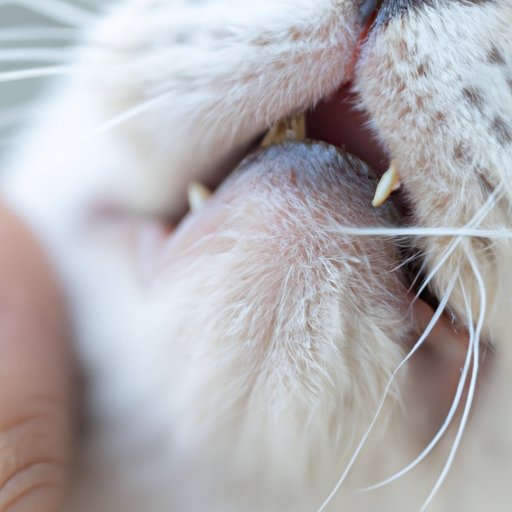
I. Introduction
As cat owners, we want to provide the best care for our furry friends. But when it comes to cat whiskers, the question of whether to trim them or not may arise. In this article, we will explore the truth about cat whiskers, why cutting them might not be a good idea, the science behind their importance, the pros and cons of trimming, how to properly trim them, and what your cat’s whiskers can tell you about their health.
II. The Truth About Cat Whiskers: To Trim or Not to Trim?
Firstly, it’s important to understand what cat whiskers are. Also known as vibrissae, whiskers are sensory organs that are rooted much deeper in the skin than regular hair. They are thicker, stiffer, and have nerve endings that send messages to a cat’s brain, providing crucial information about their environment. So, is it acceptable to trim a cat’s whiskers? In most cases, no. Doing so can have adverse effects on a cat’s balance, coordination, and overall well-being.
III. Why Cutting Your Cat’s Whiskers Might Not Be a Good Idea
Cutting a cat’s whiskers can limit their ability to navigate their surroundings. These sensory organs are important for detecting changes in air currents, temperature, and pressure, enabling a cat to determine whether they can fit through a small space and move around in the dark. Trimming their whiskers can also cause disorientation, leading to anxiety, stress, and even depression.
IV. The Science Behind Cat Whiskers and Their Importance
Cat whiskers work by bending when they come into contact with objects, sending a message to a cat’s brain about the size, shape, and texture of an object. This helps them to judge distance and the location of prey. Whiskers also assist with communication between cats, conveying their emotions and mood to other felines. In short, whiskers are crucial to a cat’s daily life.
V. The Pros and Cons of Trimming Your Cat’s Whiskers
While there are instances where trimming a cat’s whiskers might be appropriate, such as during surgery or if a cat has a medical condition, the risks generally outweigh the benefits. Some of the benefits of trimming include easing grooming, reducing the risk of getting stuck in tight spaces, and improving appearance. However, the cons include loss of sensory abilities, disorientation, and potential behavior changes.
VI. How to Properly Trim Your Cat’s Whiskers If Absolutely Necessary
If it’s absolutely necessary to trim a cat’s whiskers, it’s important to do it correctly. The process should be done by a professional, such as a veterinarian or a trained groomer. It should be done with sharp scissors, and only the tips of the whiskers should be trimmed, leaving at least a few inches of the whiskers’ base intact. To calm an anxious cat during the process, provide positive reinforcement or a distraction, like treats or toys.
VII. The Top Myths About Cat Whiskers: Busted or Confirmed?
There are many myths about cat whiskers, some of which are confirmed and some of which are busted. Some people believe that whiskers grow back, but this is not always the case, as older cats have fewer and less resilient whiskers. Others believe that whiskers indicate a cat’s mood, but this is not always true, as some cats may be relaxed or happy with their whiskers pointing forward. Lastly, some believe that cats need their whiskers to see, but in reality, cats rely on their eyesight more than their whiskers for seeing.
VIII. What Your Cat’s Whiskers Can Tell You About Their Health
A cat’s whiskers can provide insight into their health. If their whiskers are damaged, broken, or uneven, it might indicate an underlying health issue or medical condition. For example, if a cat is stressed or ill, their whiskers may droop or appear deflated. A healthy cat’s whiskers are typically erect and symmetrical, indicating that they are alert and aware of their surroundings.
IX. Conclusion
In conclusion, trimming a cat’s whiskers should generally be avoided unless it’s absolutely necessary. Whiskers are a crucial part of a cat’s sensory system, providing invaluable information about their surroundings and enabling them to navigate the world with confidence. It’s important to understand the potential negative effects of trimming, as well as how to properly trim them if necessary. Additionally, observing your cat’s whiskers can give insight into their health and well-being, so it’s essential to pay attention to any changes in their appearance.





